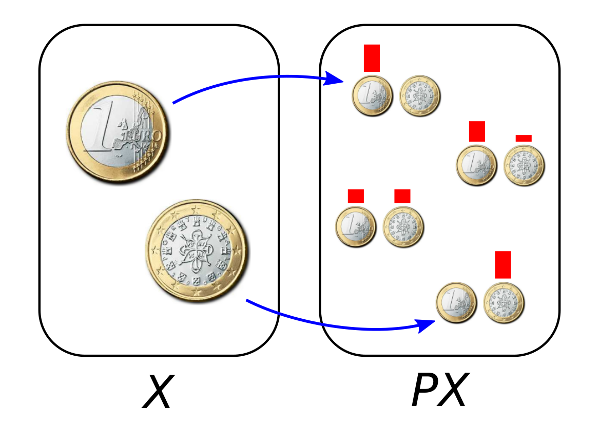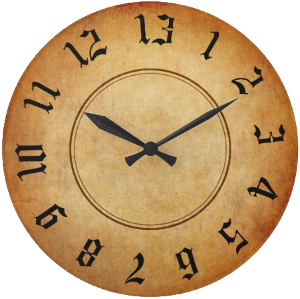March 24, 2019
Normalising Quantum Circuits
Posted by John Baez
guest post by Giovanni de Felice and Leo Lobski
This post marks the beginning of the second iteration of the Applied Category Theory School. The mentors this year are Miriam Backens, Tobias Fritz, Pieter Hofstra, Bartosz Milewski, Mehrnoosh Sadrzadeh, and David Spivak. Each mentor has provided two papers associated to their proposed project in the field of applied category theory. Our students read these papers, gaining the requisite background to engage the projects. As part of this process, they will write an article on each paper and post it here.
The Kantorovich Monad
Posted by Simon Willerton
guest post by Paolo Perrone
On this blog there has been quite a number of posts about the interaction of category theory and probability (for example here, here, here, and here), as well as about applying category theory to the study of convex structures (for example here, here, and here).
One of the central constructions in categorical probability theory is that of probability monad. A probability monad can be thought of as a way to extend spaces in order for them to include, besides their elements, also their random elements.

Here I would like to talk about a probability monad on the category of metric spaces: the Kantorovich monad. As some of you may suspect, this is related to Kantorovich duality, which appeared on this blog in the context of enriched profunctors. The Kantorovich monad was introduced by Franck van Breugel for compact metric spaces in his note The Metric Monad for Probabilistic Nondeterminism (pdf). In the work that resulted in my PhD thesis (pdf), Tobias Fritz and I extended the construction, and discovered some very particular properties of this monad. In particular, this monad can be described purely in terms of combinatorics of finite sequences of elements! Most of the work explained in this post can be found in the paper by me and Tobias:
- A probability monad as the colimit of spaces of finite samples, Theory and Applications of Categories vol. 34, 2019.
Network Models from Petri Nets with Catalysts
Posted by John Baez
Here’s another paper from the network theory gang:
• John Baez, John Foley and Joe Moeller, Network models from Petri nets with catalysts.
Check it out! And please report typos, mistakes, or anything you have trouble understanding! I’m happy to answer questions here.
March 21, 2019
Entropy mod p
Posted by Tom Leinster
I’ve just arXived a new paper:
Tom Leinster, Entropy modulo a prime, arXiv:1903.06961

In it, you’ll find answers to these questions and more — and I’ll also answer them in this post:
What are logarithms and derivations mod ?
What is the right definition of entropy for probability distributions whose “probabilities” are integers modulo a prime ?
What is the right mod analogue of information loss?
What does it mean to say that ?
Why is entropy mod a polynomial?
What does all this have to do with polylogarithms and homology?
March 14, 2019
The Myths of Presentability and the Sharply Large Filter
Posted by Mike Shulman
The theory of locally presentable and accessible categories and functors is an elegant and powerful tool for dealing with size questions in category theory. It contains a lot of powerful results, many found in the standard reference books Locally presentable and accessible categories (by Adamek and Rosicky) and Accessible categories (by Makkai and Pare), that can be quoted without needing to understand their (sometimes quite technical) proofs.
Unfortunately, there are a couple of such “results” that are occasionally quoted, but are actually nowhere to be found in AR or MP, and are in fact false. These are the following claims:
Myth A: “If is a locally -presentable category and is a regular cardinal with , then every -presentable object of can be written as a -small -filtered colimit of -presentable objects.”
Myth B: “If is an accessible functor between locally presentable categories, then preserves -presentable objects for all sufficiently large regular cardinals .”
Below the fold I will recall the definitions of all these words, and then discuss how one might fall into believing these myths, why they are is not true, and what we can do about it.
Sporadic SICs and Exceptional Lie Algebras III
Posted by John Baez
guest post by Blake C. Stacey
On the fourteenth of March, 2016 — so, exactly three years ago — Maryna Viazovska published a proof that the lattice is the best way to pack hyperspheres in eight dimensions. Today, we’ll see how this relates to another packing problem that seems quite different: how to fit as many equiangular lines as possible into the complex space . The answer to this puzzle is an example of a SIC: a Symmetric Informationally Complete quantum measurement.
March 11, 2019
Postdoc at Macquarie
Posted by Tom Leinster
Posted on behalf of my friends in Sydney
The Centre of Australian Category Theory at Macquarie University is advertising a 2-year postdoc in relation to a project entitled “Working synthetically in higher categorical structures”. It would be particularly suitable for people who work in higher categories, 2-categories, or homotopy type theory.
Further information is available here, or feel free to get in touch with Richard Garner (richard.garner@mq.edu.au) or Steve Lack (steve.lack@mq.edu.au).
March 10, 2019
How Much Work Can It Be To Add Some Things Up?
Posted by Tom Leinster
Here’s a puzzle for you. Calculating anything takes work. How much work? Well, obviously it depends how you’re doing the calculating. But let’s make some assumptions.
Imagine we have a machine that can add up any finite sequence of nonnegative reals. Doing so costs units of work — maybe measured in electricity, or potatoes, or whatever our machine uses as fuel. What could the function reasonably be?
March 6, 2019
Left Adjoints Between Categories of Posets
Posted by John Baez
I have a bunch of related questions about things like “the free lattice on a poset”, and so on. I would hope that at least some of these questions have nice answers, at least for finite posets. But I’m not having much luck finding them!
 Posts with this logo use
Posts with this logo use 














